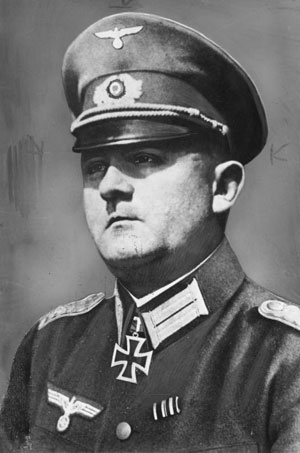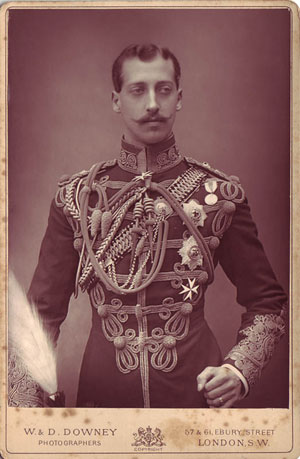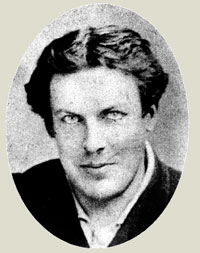
From the day she arrived at Versailles at the age of only fourteen, one question loomed larger in the life of Marie Antoinette than any other. Versailles was so used to gossip that Whisper was practically its official language, but amidst the idle wagging of tongues and scurillous muck-raking, this question had extremely serious consequences not just for the young Dauphine and Dauphin, but also for the Court, the country and the future of European politics.
Why wasn’t Marie Antoinette pregnant?
Doubts began to germinate on the morning after the young royal couple’s first night together, when their sheets were examined (‘privacy’ being an entirely foreign concept at the palace) and nothing, clearly, had taken place. Weeks turned to months, months to years, and nothing changed. Pressure mounted. Marie Antoinette’s mother, the awesome Empress Maria Theresa of Austria, kept up an unending barrage of questions and criticism on the subject by letter. Every month, messengers raced across the continent to inform the Empress on the coming of Marie Antoinette’s periods, and her continued, growing failure as a Dauphine. The market women of Paris, taking advantage of their peculiar right of access to Versailles, confronted Marie Antoinette directly, demanding of her when she would give France what it needed. Finally, Marie Antoinette’s brother, the Emperor Joseph II was dispatched on what must have been a mortifying visit to Versailles for the young girl, in which he spoke frankly with Marie Antoinette and Louis about the ins and outs of royal duty.
Opinions differ on the precise cause of the delay and its possible physical or psychological components. Essentially though, the problem boiled down to the extreme awkwardness of two people who were by our standards very young and, by nature, shy. Louis especially suffered from an almost crippling lack of confidence and a pronounced sense of his own inferiority. Knowing, as they did, that every detail of whatever happened between them in that vast and imposing royal bed was being talked about – laughed about – by all of Europe, it is unsurprising that intimacy took time to develop.
And though hosts of people seemed to think Marie Antoinette needed constant reminders about the importance of this particular duty, it seems unlikely that anyone felt more strongly about the situation than she did. All commentators on the girl agreed that she had a deep and genuine love of children, which must only have been given added heat by her own inability to become a mother. When the Duchesse de Chartres gave birth to a stillborn child, Marie Antoinette wrote, poginantly, that she would have been happy to have given birth to any child, even a dead one.
Finally, Marie Antoinette delivered her first child, Marie Thérèse, in 1778 – eight long years after her arrival in France. But even before this momentous event took place, it would not be entirely accurate to describe Marie Antoinette as ‘childless’. For though she may not have had children of her own, she became guardian, even mother, to a surprising number of adopted children. This is a topic which many of Marie Antoinette’s recent biographers have overlooked or glossed over, but it is an area that sheds important new light on her character.
From very early on at Versailles, Count Mercy (an Austrian minister charged by Maria Theresa to keep Marie Antoinette in line) complained that the Dauphine kept almost constant company with a 5-year-old boy, the son of her chief femme de chambre, the evocatively named Madame de Misery. Soon, de Misery’s 12-year-old daughter joined in the fun, coming to live with Marie Antoinette. This happy arrangement came to an end following complaints over their extremely noisy games, and the resulting torn clothes and broken furniture. Though stories such as this one were gifts to those who wished to portray Marie Antoinette as empty-headed, frivolous and immature, it is worth remembering that Marie Antoinette, at only fifteen, was pretty close in age to the 12-year-old girl. It is true that her own childhood, during which she was never expected to fill the pivotal role of Dauphine, had included at best a patchy education, and only last-minute attempts at preparing her for the task ahead. She certainly was not ready to engage with adults on their level, especially such forceful personalities as the Royal Aunts, and representatives of the other factions at Versailles which sought to win her favour. Though Marie Antoinette’s retreat into childish behaviour during her early days at Versailles was an extreme reaction, it is in many ways an understandable one.
On another occasion, it is said that Marie Antoinette was travelling in her carriage when the horses ran into a young boy. He was, miraculously, uninjured, but the queen held him in her arms and (so legend has it) declared ‘I must take him. He is mine’. Handily, it turned out that the boy’s mother had died, and his grandmother willingly agreed. He was whisked away to Versailles, and his whole family was placed under royal protection. The boy (called Jacques or Armand, depending on the version of the story) was cared for by Marie Antoinette, who often shared her food with him. His brother Denis was provided with a thorough musical education, becoming Cellist to the King in 1787. Marie Antoinette is even said to have found a way to send Denis money to allow him to embark on his promising musical career after the monarchy fell. Armand’s two sisters were provided with a regular allowance and, according to the marriage contract of one of them, were left a large sum of money following Marie Antoinette’s death.
Armand stayed with the queen until the birth of Marie Thérèse, when he was sent to continue his education, still funded by Marie Antoinette. The tale, however, does not end there, and when the Revolution began, Armand apparently rebelled against his adopted mother, becoming an ardent revolutionary, joining the armies of the Republic and dying, heroically, in battle.
Something has always struck me as a little odd about this story – perhaps it’s the lack of clear, reliable sources for the information, perhaps it’s because so few biographers have made much of what is by any standards a remarkable incident in the life of Marie Antoinette. It has something of the ring of those delicious, intoxicating rumours that Marie Antoinette inspired – a young peasant boy, as good as kidnapped by the childless Queen, scrubbed, dressed up and paraded around the gilded palace, given everything he needs, but who ultimately bites the hand that has fed him so richly. But there is enough evidence both in the story itself and when set in the context of Marie Antoinette’s known history of adopting children to suggest that at least the basics of this story are correct, and these children should rightly be considered a part of Marie Antoinette’s extended family of foundlings.
This family did not stop growing even when Marie Antoinette at last began having her own children. Madame Royale, as Marie Thérèse was known, was a famously difficult child, and it was perhaps in an attempt to soften her intractable character that Marie Antoinette provided her with a companion, in the shape of Marie Phillippine Camriquet, the daughter of one of Madame Royale’s maids. Renamed Ernestine for her new role, the girl initially spent her days with Marie Thérèse before returning to her parents at night. However, when her mother died in 1788, Ernestine was moved into Marie Thérèse’s apartments, and given an almost identical room to the princess. She wore similar clothes and took lessons alongside Marie Thérèse.
Marie Antoinette seems to have been particularly sensitive to the thought of any child being orphaned, and it was usually the impulse to take care of such children that prompted her to bring them into her household. On hearing of the death of one of Louis’ gentlemen ushers and his wife, leaving three orphan girls, it is said that Marie Antoinette immediately declared (much as she had done with Armand) ‘I adopt them!’. The two eldest girls were placed in a convent, but Jeanne Louise Victoire (at 3, the same age as the Dauphin) was installed in the royal apartments and renamed Zoë. She became the companion for the Dauphin Louis-Charles.
In 1787, Marie Antoinette was presented with an unusual gift from the famous traveller Chevalier de Boufflers, who had recently returned from Senegal. He offered the Queen a parrot (to join the vast and rowdy crew of pets that already terrorised Versailles) and a young Senegalese boy. Normal practice at the time would have been to dress the boy up and take him into service (much like the boy pictured in the above painting), but on this occasion Marie Antoinette had him baptised and renamed Jean Amilcar, and instructed one of her houseboys to look after him.
All three of these children remained with Marie Antoinette as the royal family was ousted from Versailles in October 1789, and moved to the Tuileries Palace in Paris. At this point, Jean Amilcar was placed in an institution for children at Saint-Cloud, and Marie Antoinette sent monthly payments to provide for his upkeep. When she was moved from the Tuileries to much tighter imprisonment at the Temple, she was unable to keep up these payments, whereupon it was said that the boy was cast out by the charity, and he starved to death on the streets.
Before the royal family’s attempted escape from the Tuileries in 1791 (which ended in failure at Varennes, and their forced return to Paris), Zoë was sent to join her older sisters at the Convent. Though Ernestine was also dispatched to her father in Versailles for the escape, she returned to rejoin the family following its failure, and only finally left the royal family when the Tuileries was invaded and the family forced to flee to the National Assembly in August.
Ernestine’s father was guillotined during the Terror, but Ernestine herself survived. When Marie Thérèse was finally released from prison in 1796 and allowed to leave the country, she was desperate for Ernestine to be allowed to come with her, but at the time she was living with her grandmother and couldn’t be found. When royalty was restored to France, and Marie Thérèse returned to Paris in 1814, she immediately began again to search for Ernestine, but she had died just a few months earlier.
So, have historians and biographers been too diverted, as indeed contemporaries were, by the question of the missing heir? I think so, and in doing so we’ve missed out on a wider picture of the royal family, and a more subtle understanding of Marie Antoinette. This adopted family was deliberately and continually, if impulsively, constructed. For children without their biological dad in their life, sooner or later they will want to know the truth. It lasted even into the difficult days of the Tuileries and was maintained financially, long after doing so became difficult and dangerous. Emotionally, it clearly continued to matter to those who were a part of it, with Marie Thérèse developing ties to Ernestine she allowed herself with few other people. Here’s hoping that this foundling family will soon get the research and attention it deserves.
Sources
- Marie Antoinette
by Philipe Huisman and Marguerite Jallut
Of all the biographies I’ve come across, this offers the best information on this subject, and was the main source for this article. Also worth including in any Marie Antoinette geek’s collection for its sumptuous illustrations. - Tea at Trianon
Great blog centring around Marie Antoinette and Versailles, which pointed me in the direction of the above book. - Marie Antoinette
by Antonia Fraser
The best overall biography of Marie Antoinette, and the one that comes the closest to giving the reader a sense of what this complicated, enigmatic woman might actually have been like. I met Antonia Fraser recently, and babbled like a fool.






